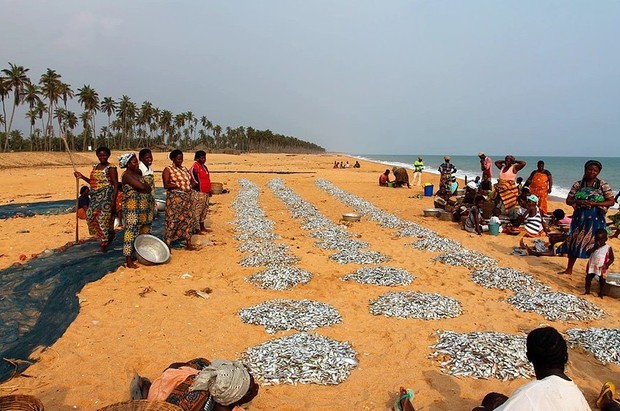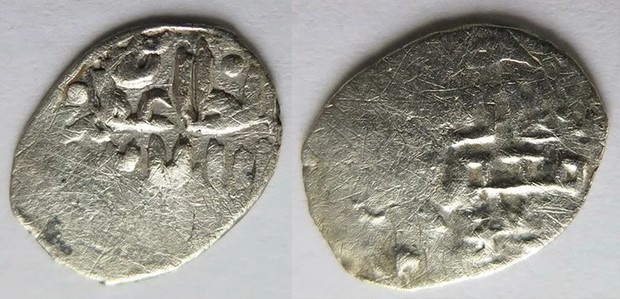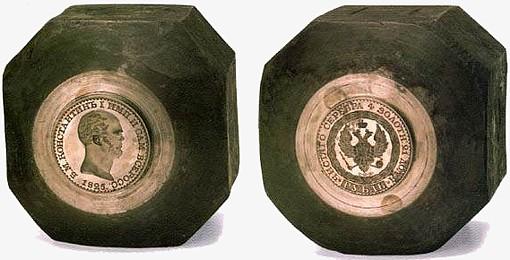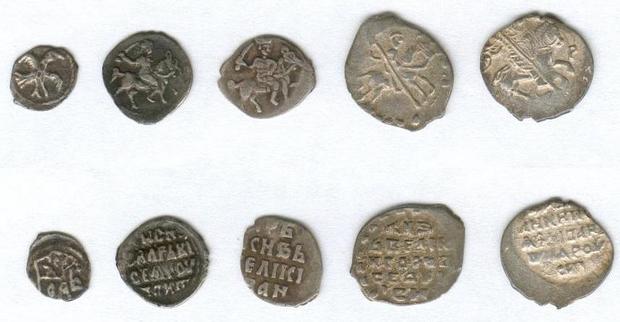Kirill Babaev: ''Russian numismatics revived in the 14th century by imitating Golden Horde coins''
Expert in Eastern studies tells about African failed states, upcoming language extinction and attitude to Kazan’s 1,000th birthday
Russian scientist Kirill Babaev visited Kazan during a winter book festival organised by Smena modern culture centre. In a talk with a correspondent of Realnoe Vremya, the Doctor of Philology, worker of the Institute of Eastern Studies of the Academy of Sciences of Russia and executive director of LRC Publishing House told the price market of Golden Horde coins, why Russia was not Nigeria and the Tatar language would not die soon.
''Western powers put effort to make Africa be unstable and bad''
You are an expert in different spheres – from linguistics to numismatics. This is why I would like to start the talk with Africa. I would like to ask you as a numismatician, in your opinion, why is the majority Africa failed states? Why did Africa become a synonym of poorness and misfortunes?
To tell the truth, I don't agree that African states are failed states. Many of them just did not have the time to succeed because, for instance, state system has been existing for 2,000 or years in Europe or more while in tropical Africa – for 60 years. It is very difficult to build a state that would correspond to all our ideas of a modern state for such a short period. Nevertheless, I think the state level and that tropical Africa managed to create during the life of two generations, what they have today is quite acceptable.
As for poorness, of course, it is a big problem in Africa. And it is explained by a huge number of different factors. There is no single reason here. The main one is that Africa has to adapt to the modern civilisation actually being a very traditional continent, of course.

State system has been existing for 2,000 or more years in Europe while n tropical Africa – for 60 years. It is very difficult to build a state that would correspond to all our ideas of a modern state within such a short period.
What do you mean?
The African culture is a very traditional culture that was not acquainted with realities. Nobody knew how to build a modern state 150 years ago there. When Congo was becoming independent in 1960, the country had 12 people who had higher education, you know. They needed to form a government, regional entities. It is a huge country, it is one of the largest countries in Africa. The formation is still in process. Africa is not rich because nobody cared about it for many centuries and there is an imbalance between the society and power. And, of course, western powers put effort to make Africa be unstable and bad. Nevertheless, I think that the situation is getting better.
What Russia and Nigeria have in common
It is clear that Black Africa became a symbol of poorness…
North African countries can be considered as the most successful ones, of course. They have a longer history of formation of national states, national economies: Egypt, Morocco, Tunisia, SAR in tropical Africa. SAR is a country that has being built by white-skin residents for the last 400 years. Now a hard transformation of power in favour of the black majority is taking place. Nevertheless, the country is one of the leaders with the best economies in Africa. Nigeria, Côte d'Ivoire are some of the advanced countries of Black Africa.
One African country can't develop on its own, you know. There is a very strong influence between the countries of the region. If one country's economy starts growing, people from neighbouring countries start rushing there. The borders are almost transparent. Naturally, a flow of refugees affects the economy of the richest country. Everything fails soon there, and a civil war begins. It is very difficult to build something stable without an integrated development of the countries of the entire region.
There is Nigeria, an oil power. Sometimes people say it is similar to Russia.
First of all, because Nigeria is an oil country. Secondly, because it is multinational. It seems these are the only similarities because Russia has a 1,000-year-old state system, big Russian culture. Nigeria doesn't have it all, of course. Nigeria doesn't have an ethnic group that would unite hundreds of small ethnicities. There are several big nations. But relations between them have never been perfect.

One African country can't develop on its own, you know. There is a very strong influence between the countries of the region.
''I have seen Wenceslaus IV of Bohemia's Czech coin found in Kazan in 1997''
Let's switch to your another hobby – the history of numismatics. How did it begin?
Indeed, at first numismatics was my hobby. I started to collect coins as a kid. I got my first coin of one of the socialist countries when I was 6 or 7. And I could look at it for hours… The coin seemed to be from Mongolia. I could observe it for hours and imagine what it was, what was written there. When I became a scientist, the hobby grew into scientific interest. Now I am dealing with mainly the history of numismatics of medieval Russia during apanage principalities. My recent book is about Tmutarakan Principality's coins.
You are both a collector and scientist. There are quite many people in Kazan who express scepticism about the millennium of the city. As it is known, Wenceslaus IV of Bohemia's Czech coin, which was found in Kazan in 1997 during archaeological digs, was the reason. Have you ever seen it? Do you believe in its authenticity?
Yes, I have seen the coin but only in a photo. This is why it is very difficult to estimate its authenticity. But now it is quite easy to define the authenticity of a coin, especially if it is silver. It is easy to check it out with the help of different devices. It is not the point. The point is that the founding of the very coin doesn't mean that there was an urban settlement in a certain archaeological layer. A number of factors must coincide, and a number of historical evidence must support these coincidences. For this reason, here I think that scientists should express a scientific opinion based on accurate facts whether it was 1,000 years ago or not and what really existed. It would be interesting, of course.

''Then inscriptions in Cyrillic started to appear. A ruler's name was minted on its one side and a mention of a khan was written on the other.''
You have a collection of Golden Horde coins. How did it appear?
I have a collection of not only the Golden Horde's coins. One of the sections of this collection is really dedicated to the Khanate of Crimea and the Golden Horde. It is a very interesting period that was not studied well because there are not many sources on the history of the Golden Horde. Coins are one of the most precious resources. They allow us to know what manuscripts don't tell, especially during a political instability. Even names of some khans, rulers of the Golden Horde are known from manuscripts. They are also featured on coins. If we compare these data, we can see a chain, we can patch the holes that written sources leave us.
So you examine coins and reconstruct historical facts, right?
Yes, for example, almost nothing is known about the Tmutarakan Principality, which my monograph is dedicated to. The Tale of Past Years mentions the Tmutarakan Principality only three times. And we can make quite many conclusions with the help of coins, know the history of the 1,000-year-old existence of this unique Russian enclave in the Black Sea.
Even names of some khans, rulers of the Golden Horde are known from manuscripts. They are also featured on coins.
Back to the collection of Golden Horde coins, is it very big?
I don't know, there are tens of coins. It is difficult to say, I have never counted them. Yes, some of them are rare, the others are not. Any collection always has several rare coins and coins that can be found at any jumble sale.
What else was written on Horde coins besides a ruler's name?
The name of the coinage, date, ruler's name like ''Fair Khan Tokhta'' were usually pictured. At times a religious formula was featured. The Arabic script was used to write on Horde coins.
What was minted on Russian coins during the obedience to the Golden Horde?
It should be said that it was quite a short period. The Russian numismatics began under Vladimir the Great in the 10 th century. Then it revived in the 14th century by imitating Horde coins. In any case, it is supposed that coins, which were an attempt to imitate Horde coins, appeared first. Then inscriptions in Cyrillic started to appear. A ruler's name was minted on its one side and a mention of a khan was written on the other. They coexisted for some time.
Was the fact that Rus was part of the Horde shown in numismatics?
Of course, because the very concept of money came from the Golden Horde.
It's interesting. Why are not there any coins of the Khanate of Kazan? Did not you find them?
There are coins of some khans of the Great Horde who ruled including in Kazan. For instance, Ulug Muhammad is supposed to be one of the founders of the Khanate of Kazan. There are coins with him. They were minted during the Horde or Kazan period. It is difficult to say, scientists can't say for sure. The existence Khanate of Kazan was short – about a hundred of years. Coinage was not established for some reason, though some people say that the Khanate of Kazan minted coins imitating Russian coins.
''Horde's people needed small denomination coins''
Why are not there gold Horde coins?
Firstly, it always depends on the metal we have at our disposal. In Middle Asia, which was part of the Golden Horde, coins were made of gold. The job was likely to be done by Middle Asian specialists designed for trade with Near Eastern countries. Silver was more popular in other places. The Horde's people needed small denomination coins. Copper coins were also minted.
Generally speaking, were coins damaged?
Coins are damaged everywhere where they are minted: forgery, cutting were a common thing in Middle Ages because coins were not protected like now. Coin edge, inscription, separate protection levels did not exist. This is why a rule of thumb was used to make coins. There were different ways to check the authenticity of a coin — its sound, weight, taste, bite marks. Punishments were different, as you understand: hand was cut off right there. It was common practice in Middle Ages. Nevertheless, forgers have always existed.
What economic crises in Russia did coins tell about?
For example, the so-called Copper Strikes. It is a story that took place in the middle of the 18 th century when Tsar Alexey Romanov adopted a copper coin that caused a severe crisis because people did not consider it as authentic. They thought copper coin was a trifle. People who got used to silver money could not believe a copper coin would cost as much as silver. When they were told that copper coin would have the same value – who cares what metal a coin is made of – Russian people could not believe. Copper Strike took place. People refused copper coins. The coins had to be withdrawn from circulation and changed for silver again.
What is the most expensive Russian coin, from an ordinary person's point of view?
The famous Constantine ruble is the most expensive Russian coin. It is Emperor Constantine Pavlovich's ruble who did not rule. He was Emperor Pavel's second son. When his brother Alexander who did not have children died, he was to occupy the throne. But he refused the throne because he married a woman he loved, wanted to live with her and did not need the throne. Petersburg did not know it and minted 6 first coins during the short period between Alexander's death and Constantine's refusal. Constantine's portrait is featured on the coins: ''God's Grace Emperor Constantine''. That coins were distributed among members of the tsar family and are considered as rare Russian coins because they totalled only 6. Their price is impossible to be fixed.
''Horde coins can cost $1-2,000''
What about Horde coins?
It is much more complicated. The price of a Horde coin depends on its state. There are so many Horde's coins in so bad state that their value is not high. It is even impossible to distinguish a name. This is why coins of rare khans found in a perfect state are the most precious ones, of course. It is difficult to find them. To be honest, they are not examined well to be able to say that this coin is the rarest and only. It can be found in one place today and in another — tomorrow. So, they already make two. They are still actively found. It is impossible to find the Constantine ruble in soil, while the Golden Horde's coins are often detected in soil.
Where is the Constantine ruble kept now?
They are six in total. Some of them belong to private collections. The Hermitage and Historical Museum in Moscow have one each.
How much is it?
In 2004, one of that coins were sold for $500,000 at auction.
How much Horde coins are?
They can cost $1-2,000. If they are in a good state, if they are rare coins, coins of rare coinage (because it depends not only on a khan but also the place where they were minted). Some coins are rare, some of them are found more often. Some mints made few coins but left their sign.

''The world doesn't need 6,000 written languages''
Do you believe that 6-7 languages will remain as a result of globalisation?
6-7 – no. I admit one hundred.
Why don't languages of small nations survive?
Because they don't have a writing system. If a language doesn't have a writing system, it is doomed in the modern world: it is impossible to teach kids using it, print literature, issue a newspaper, create a site on the Internet, even write an ad. Consequently, it is not used because you need to write these ads somehow, and you do it in another language. So people gradually switch to it.
Are there any mechanisms for saving these languages?
No. The world doesn't need 6,000 written languages. Many of them are used by one or two hundred people who live in the countryside because they don't need to write. Probably there is not task to save these languages. It is a natural process. The amount of languages on the Earth grew first and started to fall. No big deal. Our task is to not only save them but also write them down.
Sure, to conserve for history. As for the Tatar language. What is your forecast?
There is no problem with the Tatar language. It is a written language, millions of people speak it, write in it, the media uses it. I think it has great perspectives.
What linguistic theories prevail today?
There are many. It depends on a subject. In America, generative linguistics is very popular now. It looks for a kind of universal language, formation and description scheme of a language. It was in vogue in the 70-80s. But now all people gradually understand it is impossible to create a universal language. This is why they refuse this theory. In our country, the generative theory is not very popular.
